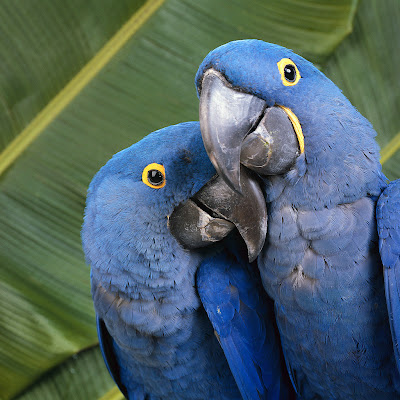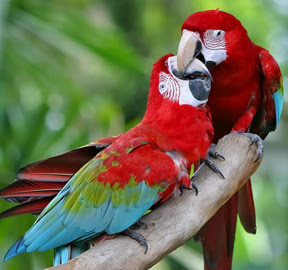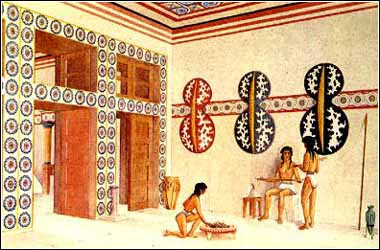
With more than 40 different color morphs, the Blunthead Cichlid may actually have a variety for every color of the rainbow!
The Blunthead Cichlid Tropheus Moorii was described over a hundred years ago (1898), and was the first of their genus be recognized. This is actually a small genus of fish in Lake Tanganyika, Africa, but with over 120 known color varieties. They are very specialized feeders which restricts their habitat to rocky areas with good algae growth. But they can be found spread throughout this enormous lake at almost every single reef, and each area has a unique color variety.
The Tropheus became a big hit when first introduced in Germany in the mid 1970’s and then into the United States, and are still very popular today. Many of the imports were identified as T. Moorii varieties, but now it is recognized that these fish represent a number of different species. Five species are scientifically described today, and four of the five have various color morphs. Even so, the Blunthead Cichlid T. Moorii contains the largest number of color morphs. They are quite diverse with each having its own unique and beautiful coloration. Many are identified by the geographic location where they are collected, with the name of the locale tagged to the end of Tropheus Moorii, inside of quotation marks. But many are also called by names reflecting their beauty and often colors of the rainbow, such as Blue Rainbow, Yellow Rainbow, Tanzania Red Rainbow, Sunspot, Red Breast Moorii, Orangefleck, and more. The Blunthead Cichlid pictured above is from the northwestern area of Nkamba Bay, Zambia.
A colony of 12 or more Blunthead Cichlids can make an amazing display and their personality is a definite plus. The Tropheus have a really interesting social structure that is built upon a colony of consistent tank mates. They are very active and have individual behaviors, from curiously lining up to watch the goings on in the room to their 'dolphin-like' antics when eating. Feeding time can be very 'wet' for their keepers, but make this fish very fun and desirable. The Blunthead Cichlid has a reputation of being one of the most aggressive of the Tropheus species. In the wild they are very aggressive with conspecifics, but are said to be less aggressive with other fish. In the aquarium their aggression level towards unrelated fish can vary depending on the personalities of the individual fish.
They are rather expensive fish and they can be afflicted with the occurrence of 'bloat', and there seems to be no explainable rational as to its cause. Initial attempts to keep them often met with difficulty until aquarists became familiar with their rather specific, though uncomplicated needs. This hearty cichlid can be easy to moderate to keep as long as attention is paid to its diet and mandatory water changes are done, and difficult if they are neglected. Provide a sandy substrate, strong lighting to encourage algae growth, and several rock piles along with rocks formed into caves. Having a very aggressive nature, they are best kept in a species specific tank. Do not add a new fish to an already established colony as this will cause an upset and death. They may also be kept in a larger aquarium with some other herbivorous rock dwelling African cichlids. The larger the tank and the more hiding places you have will help with aggression. Truly a rewarding fish for the aquarist who is willing to provide the necessary care.
































 These animals are highly social and are sometimes found in herds of thousands, especially in offshore forms, though groups of several hundred are more common. Herds contain both sexes and all ages. Pantropical spotted dolphins are often seen in the company of other dolphin species, particularly
These animals are highly social and are sometimes found in herds of thousands, especially in offshore forms, though groups of several hundred are more common. Herds contain both sexes and all ages. Pantropical spotted dolphins are often seen in the company of other dolphin species, particularly 












